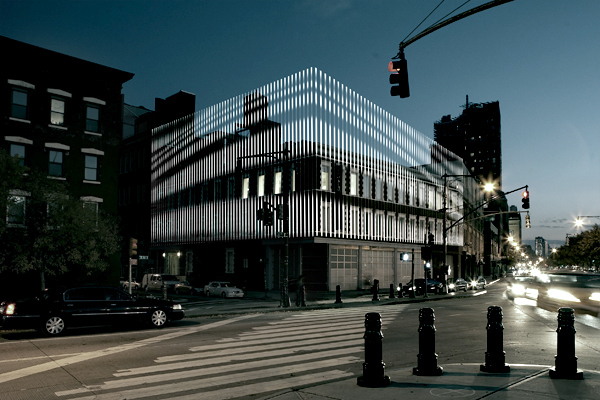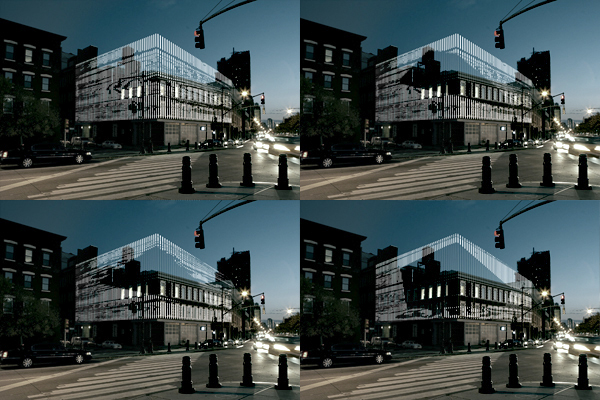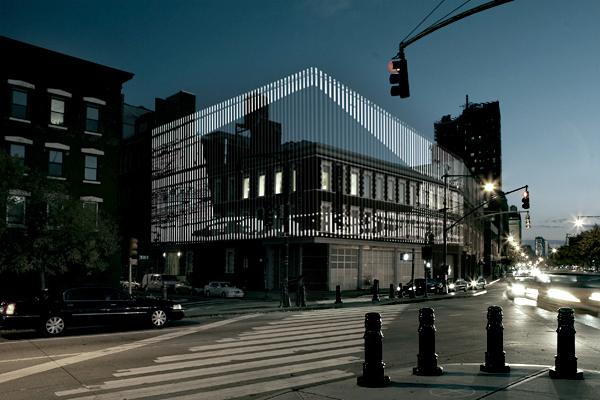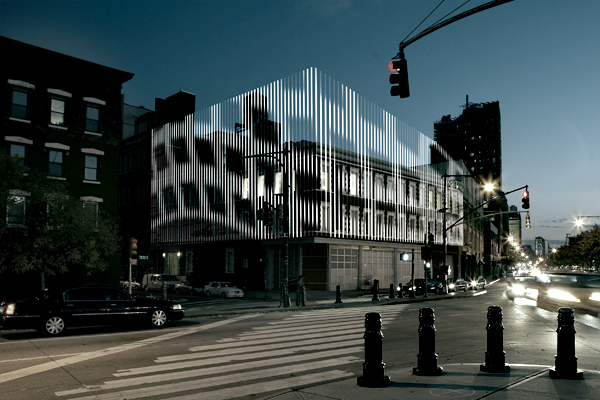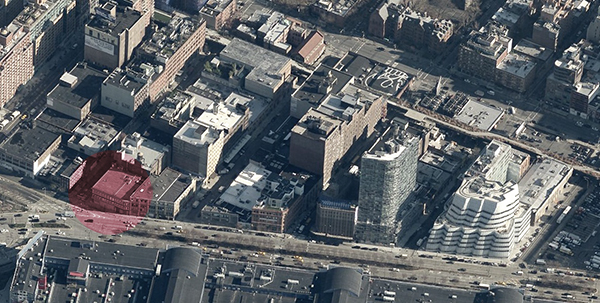
A layer of vertical LED-rods was to be installed on the façade of the Chelsea Art Museum, with a gap in between the building and the new structure. The LED structure surpasses the height of the building, to be in line with the taller buildings immediately surrounding the Museum. The material used for the new façade is extremely thin and it will appear as a transparent shell covering the building.
The installation features abstract images moving across the building, at times even appearing to extend the structure of the Museum beyond its actual size. In this way, the projections interact with the building’s façade, covering parts of it at times, but also allowing its original appearance to show through. Through elaborate programming, and given that the Chelsea Art Museum building was situated on a corner, the installation lets the virtual structures appear three-dimensional. The effect is to make it seem as though a new structure is being developed over the original façade as the viewer is watching.
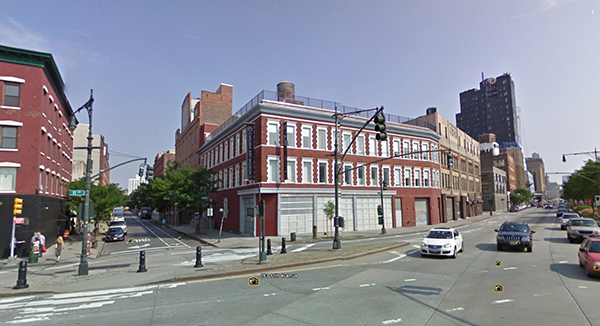
The gap left between the original building and the new façade structure respects the integrity of the building, while manipulating its appearance depending on the installation’s programming and the viewers position.
Accordingly, the new façade does not replace the existing one, rather, it plays with its surface and volume. Consequently, art, normally contained within a museum, would have steped beyond the confines of the building to interact with the city and its inhabitants. The new architectonic volume of the building would strengthened Chelsea Art Museum’s presence in the Manhattan cityscape.
realization was planned for 2010, project discontinued, the museum closed down end 2010.
